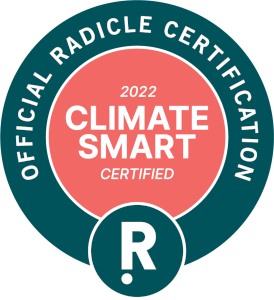There’s a myriad of digital tools and artificial intelligence sneaking their way into our lives. Many businesses fear that without dedicating significant (human) time to their marketing, these tools and AI will compromise your brand personality and ethics.
We’re here to tell you that you can use automation and AI tools WITHOUT sacrificing your unique brand voice, personality, and business ethics and values. Keep reading to learn how.
What is marketing optimization?
Marketing optimization helps you ensure every step in your sales funnel (from attraction to purchase and beyond) is optimised to be mindful of costs, to increase sales, and to save you as much time as possible (so that you can re-invest in other areas of your business). In our evolving digital age, using technology and AI can significantly benefit your strategy.
Benefits
What are the benefits of optimising your digital marketing with AI and other digital tools?
You’re more efficient
You’ve heard the expression, “Don’t reinvent the wheel.” Why recreate the same thing repeatedly when it can be automated and you can save time?
For example, you could manually write emails to each customer that are customised with their name and have customised messaging based on purchase or engagement history. Or you can use a digital marketing automation tool like Mailchimp, Constant Contact, or MailerLite to send this email based on dynamically generated content from your Customer Relationship Management (CRM) software.
With email marketing automation, you write the templated email once, and the software automatically inserts the subscriber name and generates dynamic ads or content based on what the AI predicts are likely subsequent purchases or up-sells based on the customer’s history and behaviour.
You can save money
Imagine the money you can save in staff wages if you can automate some of their processes (like generating analytics reports, automatically sending email marketing, and nurturing your leads). This frees your team to reinvest their time in other revenue-generating tasks that require a hands-on approach.
You can enhance data collection
The best digital marketing optimization tools collect valuable data about your followers. That could include details about who opens your email (and what links they click), which campaigns bring in the most leads or sales, and how much you earn in sales for your advertising spend.
Most automation tools make this data easy to access in your dashboard, and you can use it to inform changes to marketing messaging and campaigns. You can use marketing optimization tools to do A/B testing to see which version of a Facebook ad performs better and direct more of your budget to the better ad. You can learn which emails your subscribers open most often and send more similar content to encourage similar open rates.
You better understand your audience
The data collected by marketing optimization tools helps you better understand your customers so you can update your ideal client personas. You can learn what content or times your customers are more likely to purchase or engage with your brand. This information helps you optimise your campaigns to include more of what they like and less of what they don’t like.
You get an optimised ROI
With the increased analytics data collection, you can get a specific dollar value to understand the ROI of your marketing efforts. For example, if you spend $1,000 per month on email marketing and regularly generate $2,000 monthly from links in your email, you can clearly see a positive ROI in your efforts for this channel, justifying the spend.
It can also give you a measurable representation of customer engagement levels (such as calculating how many people shared your social media posts, who your most active followers are, and how many likes and comments you get. While not dollar-based ROI metrics, these are still important lead nurturing metrics that can help you optimise your marketing efforts.
Examples of marketing optimisation
Ready to start optimising your marketing? Here are some examples of marketing optimization tactics and strategies:
- Use AI-powered recommendations from your automation and marketing software.
- A/B test to find the best-performing ads, social content, and campaign creative.
- Use email marketing software to send dynamically generated emails based on user actions (like purchasing, leaving items in the cart, and sending customer anniversary emails).
- Use retargeting to show targeted social and website ads to users who have visited your website before
- Use geotagging to show your ad content to users in a specific geographic area.
- Analyse hashtags to see which are most popular and attract new followers or lead to sales or opt-ins.
- Use website analytics to better understand user behaviour on your website so you can improve the flow and usefulness of your website.
- Optimise your website content for SEO keywords and refine your chosen keywords based on your analytics and metrics.
5 steps to optimise your marketing
Here are five steps to optimise your digital marketing in 2024.
Step 1: Research your target audience
Before investing time or money into digital marketing, the first step is to do some audience research. You should have a detailed understanding of key persona characteristics such as:
- What they buy (or want to buy)
- How much they’re willing to spend
- How often do they repeat purchases?
- Where do they “hang out” online?
- What types of content do they consume the most?
- Anything that influences their buying decision
Your marketing optimization process will help you develop a deeper understanding, so write down as much as possible about your target audience as you know them now. You can add to it later.
Step 2: Set-up software and automations
Once you know what content your customers want (based on their purchase history, social media behaviour, and other preferences), you can look for software and processes to help create and distribute your marketing content.
Many tools can help you automate and optimise your digital marketing. Here are a few:
- Email marketing software (Mailchimp, Constant Contact, MailerLite)
- Social Media Scheduling (Hootsuite, Buffer, Later)
- Customer Relationship Management (Hubspot, Salesforce, Zoho CRM)
- Graphics and graphics templates (Photoshop, Canva)
- Communication and messaging (Slack, Drift)
- Marketing Project Management (Asana, Trello)
Set up software and look for automations that can help you automate repetitive tasks such as sending emails, creating dynamic content based on customer information, sending auto-replies to customer website chat messages, and scheduling social media posts.
Step 3: Start tracking analytics and metrics
Ensure you have installed the appropriate tracking code on your website and digital content to allow your analytics software to track analytics. Google Analytics can provide super helpful analytics for your website and tracked links, but also look for what analytics may be included in any marketing optimization software you’re using.
Don’t forget you can also track links not on your website or owned digital assets by creating tracking links through Google Analytics Campaign URL Builder. These links include a unique tracking code at the end of the URL to allow you to track metrics for these links through your Google Analytics account.
Step 4: Create and distribute content
Once your digital tool infrastructure is set up, you can begin creating marketing campaigns and content. Use what you already know about your customers to take an educated guess at what content would best speak to their needs and place them on platforms and in mediums your customers want.
Create plans to do A/B testing to see which creatives and campaigns generate the best results. Be sure you have separate tracking to determine which ad performs better.
Step 5: Review, optimise, repeat
Marketing optimization is an iterative process of continually creating, testing, and optimising content and marketing tactics. By using analytics, you can see the channels, creative, and tactics that drive you closer to your marketing or business goals while automating as much as possible.
You will never be done optimising your marketing as the market, customers, and company continually grow and evolve. Make sure you review your analytics and make adjustments regularly to help maximise your ROI potential.
How to measure marketing optimisation success
The definition of marketing optimization success will be unique to your business and its goals. Ensure you have quantitative metrics and measurable goals before you begin a campaign. These metrics will help you measure your goal progress and, eventually, the achievement of your goal.
The Out-Smarts Marketing team can help you set up the right strategy, tools, and content to help you with your marketing optimization goals. We have experts in SEO, web design, social media, paid media, and email marketing ready to help you!
Learn more about our marketing optimisation services and book a free 30-minute discovery call to share more about your needs.




